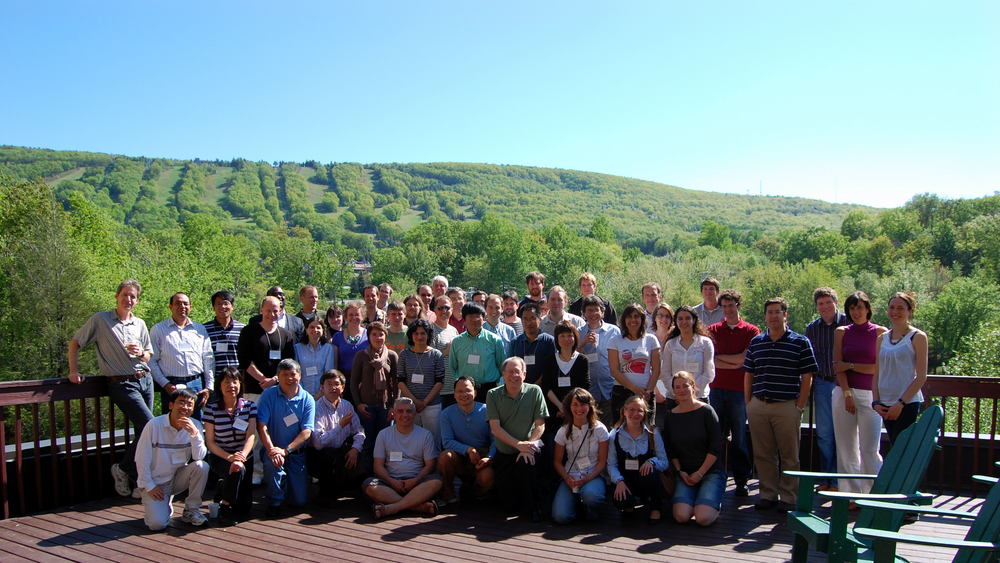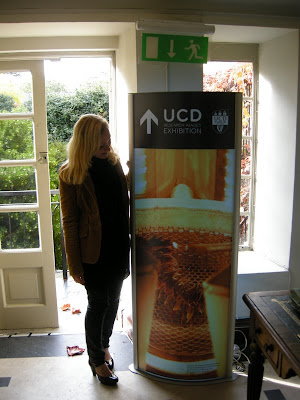A couple of months ago I had the opportunity to leave temporally the world of Fire Safety Engineering and attend two conferences related to the non-fire aspects of my thesis work: data assimilation and optimization.


The 8th International Workshop on Adjoint Model Applications in Dynamic Meteorology
The first conference, organized by NASA and with NSF support (who also provided a grant to pay for my expenses), was held in the little town of Tannersville, in Pennsylvania, USA, and was the International Workshop on Adjoint Model Applications in Dynamic Meteorology(18–22 May 2009).
While most of the talks of this conference were way out of the scope of my thesis (and many of them incomprehensible to my 'engineering' mind), a few of them were closely related to my thesis work, and I could get some very interesting ideas from them. Additionally to the talks there was a tutorial session which occupied most of the first day of the conference. This was made for PhD students who use functional data assimilation systems for numerical experiments, rather than develop them on their own. The 5h-tutorial covered all the basics of data assimilation and adjoint modelling, and was very helpful in terms of getting my hands on the things I had read on DA in various papers, and it filled the gaps resulting from my still growing mathematical knowledge.

Group photo at the Adjoint Worshop
On the last day of the conference I presented my work in the poster session. Being the only person at the whole conference without a meteorological background, I got a few 'what on earth is he doing?' looks, but generally the idea of using data assimilation concepts in other areas generated a great deal of interest, and people were very curious about fire modelling in general.
Overall, this workshop was very interesting and useful, and gave me the opportunity to talk to the most prominent people in the field of DA (e.g. Ronald Errico, Ronald Genaro, Jeff Kepert). On my return to Edinburgh, I could apply some of the newly acquired knowledge and thereby greatly simplify my problem, which accelerated my progress significantly. One of the things I realized at this conference was the immense amount of resources historically invested in the topic: so many people have worked in Data Assimilation in the last 50 years, and so many more issues are yet to be resolved. Applying all these concepts to Fire Forecasting is certainly going to take a few more PhDs....
EUROGEN 2009, ECCOMAS Thematic Conference
The second conference was EUROGEN, on Optimization and Control, was held in Krakow, Poland in June. It was organized by
ECCOMAS, ECROFTAC, and CIMNE. The conference was mostly focused on industry problems of optimization, and the very broad range of topics presented in the conference made it difficult to find talks even loosely related to my research. However, after presenting our work on inverse modelling of fire dynamics, I did get very positive feedback and people showed a lot of interest (for some reason people get very excited when they see FDS snapshots).

Photo: Audience of one of the talks (I am on the right)
The eternal question of whether it is better to use gradient based optimization, or whether evolutionary algorithms are the way forward, was very present at this conference. Unfortunately no real discussion on the subject could be established, since each party is absolutely convinced that they are right, and therefore the discussion is not necessary (this actually seems to be accepted by both parties). Even after enquiring on both sides I did not get any useful arguments that would justify preferring either methodology.
It is absolutely necessary at this point to mention the excellent organization of the conference with a very nice venue, outstanding food and an extraordinary gala-dinner at the oldest restaurant in Krakow (established in 1364). Obviously the charm of this beautiful city added its part to the success.















